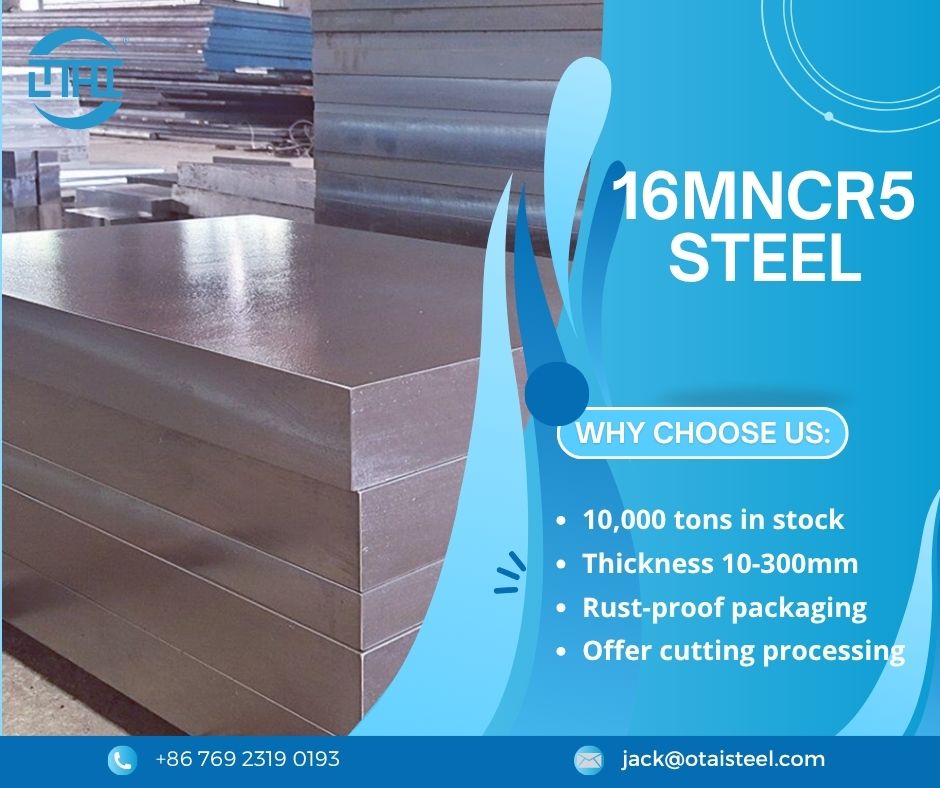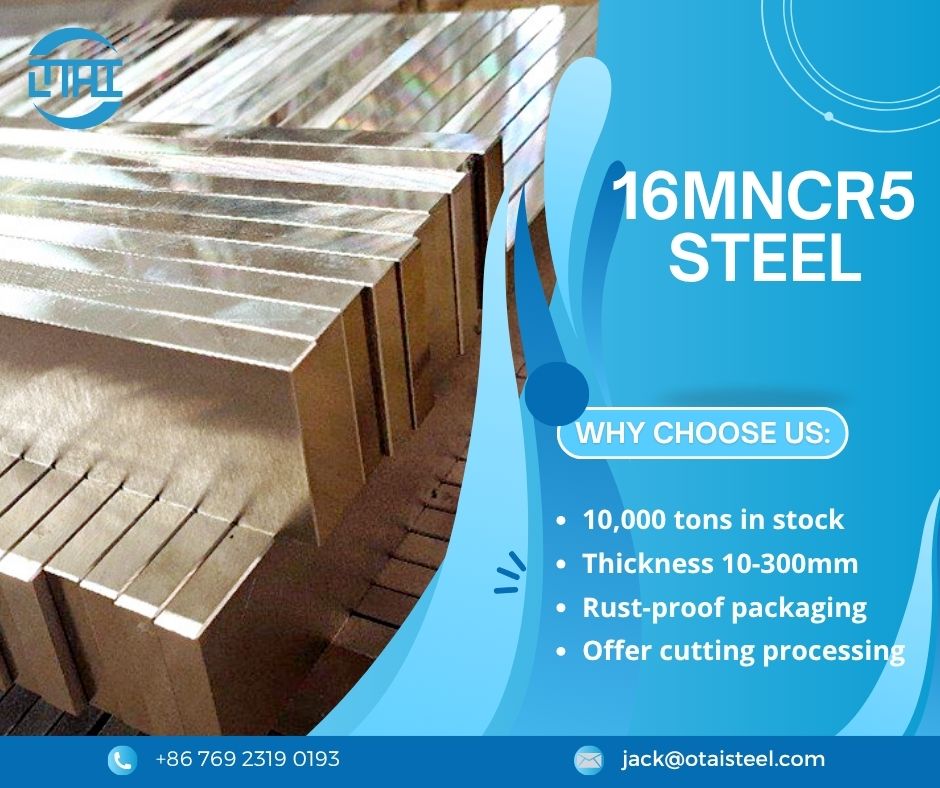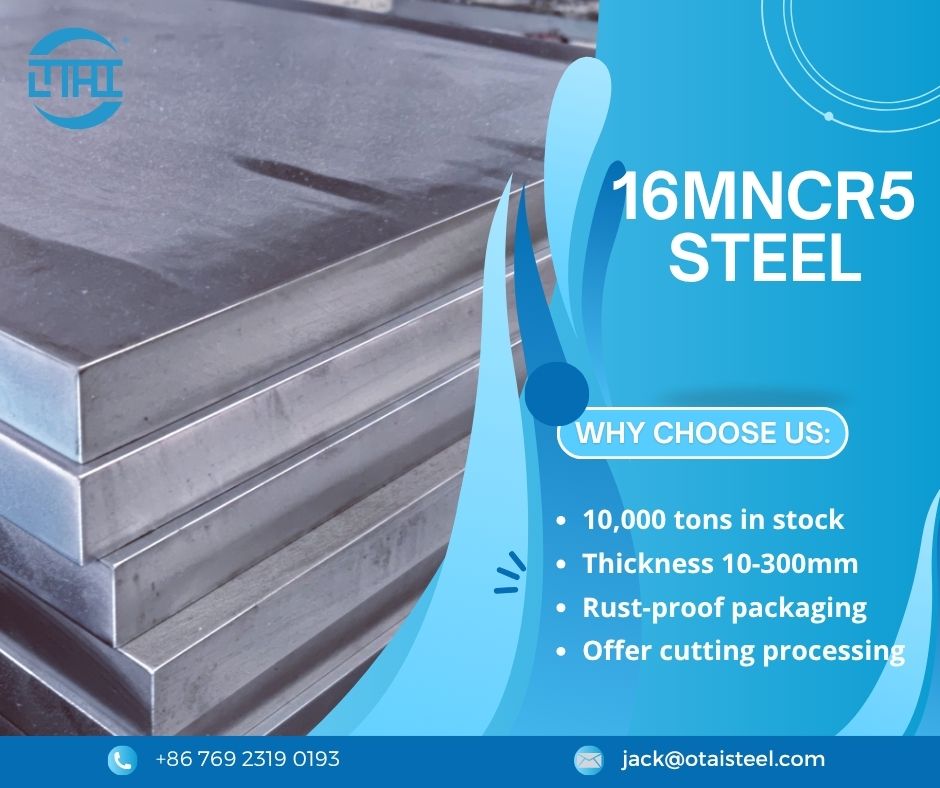 16MnCr5 Steel Number: Understanding Its Classification and Applications
16MnCr5 Steel Number: Understanding Its Classification and Applications
When discussing 16MnCr5 steel, it’s crucial to understand the steel number, a system used to identify the material’s chemical composition and properties. 16MnCr5 is a medium-carbon low-alloy steel frequently used for gears, shafts, and other high-performance components. Knowing how the steel number works helps you choose the right material for your specific application, ensuring top quality and performance.
In this article, we’ll dive into the 16MnCr5 steel number, its key characteristics, and the most common applications of this versatile steel.
🧪 What Does the 16MnCr5 Steel Number Mean?
The 16MnCr5 designation follows a system commonly used in Europe under the EN (European Norm) standards. Here’s a breakdown of the number:
| Steel Number | 16 | Mn | Cr | 5 |
|---|---|---|---|---|
| Meaning | Carbon content: 0.16% | Manganese: 0.9 – 1.2% | Chromium: 0.8 – 1.1% | Additional number for hardening properties |
-
16: Represents the carbon content of 0.16%, making this steel a low-carbon alloy.
-
Mn: Manganese, in the range of 0.9% – 1.2%, strengthens and hardens the steel.
-
Cr: Chromium, between 0.8% – 1.1%, boosts wear resistance and hardness.
-
5: Indicates that this steel is designed for carburizing applications, allowing for a hardened surface while maintaining toughness in the core.
🔍 Key Properties of 16MnCr5 Steel
16MnCr5 steel offers a balance of strength, toughness, and wear resistance, making it ideal for parts subjected to high stress and heavy loading. It’s commonly used for gears, shafts, axles, and crankshafts, where components need to withstand dynamic forces and repeated stresses.
Here are some key properties of 16MnCr5 steel:
| Property | Value/Range |
|---|---|
| Tensile Strength | 700 – 900 MPa |
| Yield Strength | 500 – 700 MPa |
| Hardness (as quenched) | 55 – 65 HRC |
| Impact Toughness | 30 – 40 J (depends on heat treatment) |
| Fatigue Strength | High (especially with carburizing) |
The combination of manganese and chromium gives 16MnCr5 a good balance of hardness and toughness. The carbon content makes the steel suitable for carburizing, which hardens the surface while keeping the core tough and impact-resistant.
🏗️ Common Applications of 16MnCr5 Steel
16MnCr5 steel’s properties make it perfect for high-performance components exposed to high stress. Some of its primary uses include:
| Application | Description |
|---|---|
| Gears | Ideal for carburized gears, providing excellent wear resistance. |
| Shafts and Axles | Suitable for high-strength shafts and axles subjected to dynamic loads. |
| Crankshafts | Best for high-torque crankshafts, combining strength and toughness. |
| Machine Components | Used in heavy-duty machine parts, including bearings and rollers. |
| Automotive Parts | Common in automotive components that need both fatigue resistance and wear resistance. |
In these applications, 16MnCr5 benefits from carburizing, which hardens the surface while improving wear resistance and fatigue strength.
📊 Comparison with Other Similar Steels
Let’s compare 16MnCr5 to other steels with similar properties:
| Steel Grade | Carbon Content | Manganese Content | Chromium Content | Common Uses |
|---|---|---|---|---|
| 16MnCr5 | 0.16% | 0.9% – 1.2% | 0.8% – 1.1% | Gears, shafts, axles, crankshafts |
| AISI 8620 | 0.18% | 0.7% – 0.9% | 0.5% – 0.9% | Carburized gears, automotive parts |
| AISI 5140 | 0.38% | 0.60% – 0.90% | 0.80% – 1.10% | Crankshafts, axles, high-stress components |
| AISI 9310 | 0.08% | 0.60% – 0.90% | 0.70% – 1.10% | Aircraft components, heavy-duty gears |
| AISI 4130 | 0.28% | 0.90% – 1.20% | 0.80% – 1.10% | Aerospace, automotive, machinery parts |
16MnCr5 shares similarities with AISI 8620 and AISI 5140, but stands out with higher manganese and slightly lower carbon content, making it suitable for carburizing and ensuring high wear resistance.
🏅 Why Choose Otai Special Steel for 16MnCr5 Steel?
If you need high-quality 16MnCr5 steel, Otai Special Steel offers reliable solutions. Here’s why you should choose us:
| Feature | Details |
|---|---|
| Premium Quality | We provide 16MnCr5 steel that meets rigorous standards. |
| Custom Services | We offer cutting, heat treatment, and machining to suit your needs. |
| Global Distribution | We deliver worldwide to ensure your project’s timely completion. |
| Competitive Pricing | We provide cost-effective solutions without sacrificing quality. |
With Otai Special Steel, you can trust that your 16MnCr5 steel components will perform reliably, no matter the application.
❓ FAQ: Frequently Asked Questions
Q1: Can I weld 16MnCr5 steel?
A1: Yes, you can weld 16MnCr5 steel with the proper preheating and post-weld heat treatment to avoid cracking, especially in high-strength applications.
Q2: Is 16MnCr5 steel suitable for use in marine environments?
A2: While 16MnCr5 is great for high-stress and wear-resistant applications, it is not specifically designed for corrosion resistance. For marine environments, AISI 316 or AISI 904L may be better choices.
Q3: How can I improve the surface hardness of 16MnCr5 steel?
A3: Carburizing can improve the surface hardness of 16MnCr5, enhancing its wear resistance and fatigue strength.

